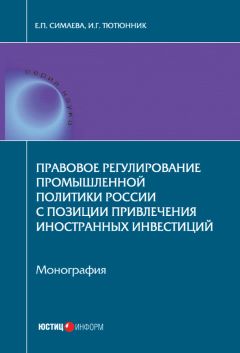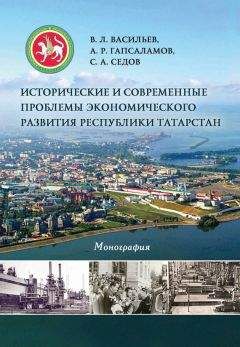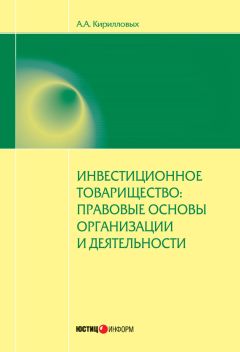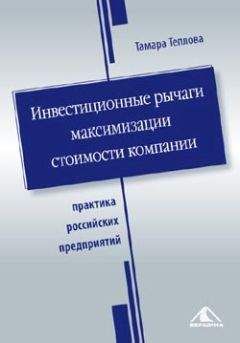Дэвид Фридман - Пенис. История взлетов и падений
C. 21. «Я — Осирис… c тугим членом»: Spells 39, 69, and 110, in Raymond O. Faulkner, trans.. The Ancient Egyptian Book of the Dead (London: British Museum Press, 1985), p. 60–61, 70, 104.
C. 22. «Члены военачальников ливийских»: Richard Zacks, History Laid Bare (New York: Harper Perennial, 1994), p. 3. Речь Меннептаха из David P Silverman, ed., Ancient Egypt (New York: Oxford University Press, 1997).
с. 22. «А три тысячи лет спустя»: цитата из Sean Wilentz, «Lone Star Setting», New York Times Book review, April 12, 1998, p. 5 (review of Robert Dallek's Flawed Giant).
C. 23. «Держи его, чтобы он не потерял сознание»: Blair О. Rogers, «History of External Genital Surgery», Plastic and Reconstructive Surgery of Genital Area, ed., Charles E. Horton (Boston: Little, Brown, 1973), p. 7.
C. 23. Среди лучших авторов, писавших об обрезании: David L Gollaher, Circumcision (New York: Basic Books, 2000); W. D. Dunsmuir and E. M. Gordon, «The History of Circumcision», British Journal of Urology International 83, suppl. I (1999): 1–12; James Hastings, ed.. Encyclopedia of Religion and Ethics (New York: Scribner, 1951); David Bleich, Judaism and Healing (New York: Ktav, 1981); J. M. Glass, «Religious Circumcision: A Jewish View», British Journal of Urology International 83, suppl. I (1999): 12–21; Mark Strage, The Durable Fig Leaf (New York: Morrow Quill, 1980); Howard Eilberg-Schwartz, The Savage in Judaism (Bloomington, ind.; Indiana University Press. 1990); and Lawrence A. Hoffman, Covenant of Blood (Chicago: University of Chicago Press, 1996).
C. 24. «Одним из целителей»: Gollaher. Circumcision, p. 5.
C. 25. Все библейские цитаты взяты из Herbert G. May и Bruce M. Metzger, eds.. The Oxford Annotated Bible with the Apocrypha, Revised Standard Version (New York; Oxford University Press, 1965).
C. 28. «Что может быть более логичным»: Gerda Legner, The Creation of Patriarhy (New York: Oxford University Press, 1986), p. 192.
C. 30. «Большинство из них, по-видимому, пользовались Pondus Judaes»: S. В. Brandes and J.W McAninch, «Surgical Methods of Restoring the Prepuce; A Critical Review», British Journal of Urology International 83, suppl. I (1999); 109–13. On epipasmos; Jody E Rubin, «Celsus’s Decircumcision Operation», Urology 16 (1980): 121–24; T. Schneider, «Circumcision and Uncircumcision», South African Medical Journal 50 (1976): 556–58; Gollaher, Circumcision, p. 16–17.
C. 32. «Римские солдаты отрезали»: Gollaher, Circumcision, p. 15.
C. 33. «Когда 11 августа 1492 года»: цитируется по J. В. Hanna, Christianity (London: F. Griffiths, 1913), p. 218.
C. 33. «Окончательная проверка»: Peter Stanford, The She-Pope (London: Heileman, 1998), p. 11.
C. 34. «Я присел на это кресло»; Stanford, The She-Pope, p. 12.
C. 35. «В таких племенах»: Sarah Dening, the Mythology of Sex (New York: Macmillan, 1996), p. 133.
С. 35. «Все это вызывает недоумение»: S. Н Smith, ««Heel» and «Thigh»: The Concept of Sexuality in The Jacob-Esau Narratives», Vetus Testamentum 40 (1990): 464–73.
C. 36. «В наше время эта шутка» Цит. по Reay Tannahill, Sex in History (New York: Scarborough, 1992), p. 89.
C. 37. О греческих идеалах красоты, спорта и наготы: Andrew Stewart, Art, Desire and The Body in Ancient Greece (New York: Cambridge University Press, 1997); Eva Keuls, The Reign of the Phallus (Berkeley, Cal.; University of California Press, 1993); John J. Winkler, «Phallos Politikos: The Body Politic in Athens», Differences 2, (1990): 29–45; Larissa Bonfante, «Nudity as a Costume in Classical Art», American Journal of Archaelogy 93 (1989): 543–70; Larissa Bonfante, — Introduction: Essays on Nudity in Antiquity», Source: Notes in the History of Art 12 (1993): 7–11; Timothy J. McNiven, The Unheroic Penis: Otherness Exposed», Source: Notes in the History of Art 15 (1995): 10–16; Robin Osborne, «Men Without Clothes: Heroic Nakedness», Gender & History 9 (1997): 504–28; Clarence A. Forbes, «Expanded Uses of The Greek Gymnasium», Classical Philology 40 (1945): 32–42; Richard Sennett, Flesh and Stone (New York: Norton, 1994); R. E. Wycherley, The Stones of Athens (Princeton, N.J.: Princeton University Press, 1978); Robin Osborne, «The Erection and Mutilation of the Hermae», Proceedings of The Cambridge Philological Society 23 (1985): 47–73; Brian M. Lavelle, «Hipparchos Herms», Classical Views 29 (1985): 411–20; Maryanne Cline Horowitz, «Aristotle and Woman», Journal of The History of Biology 9 (1976): 183–213.
C. 40. «Связь между могуществом»: E. E. Rice. The Grand Procession of Ptolemy Philadelphus (London; Oxford University Press, 1983).
C. 41. «Дионису ежегодно посвящали»; Н. W. Parke, Festivals of the Athenians (Ithaca, N.Y.: Cornell University Press, 1977): Giulia Sissa and Marcel Detienne, The Daily Life of the Greek Gods (Stanford. Cal.: Stanford University Press, 2000); Carl Kerenyi, Dionisos (Princeton. N. J.: Princeton University Press. 1976).
C. 43. «Как пишет исследователь классицизма»: Csapo, «Riding The Phallus», p. 260.
C. 44. «Греки ценили маленький тонкий пенис»: К. J. Dover, Greek Homosexuality (Cambridge, Mass.: Harvard University Press, 1989); McNiven, — The Unheroic Penis», p. 10–16.
C. 44. «Если добрые примешь советы мои»; Цит. по Winkler, «Phallus Politikos». р. 29.
С. 45. О греческой педерастии написано много трудов, среди которых; Dover, Greek Homosexuality; William Armstrong Percy III, Pederasty and Pedagogy in Archaic Greece (Urbana, III.: University of Illinois Press, 1996); David M. Halperin, One Hundred Years of Homosexuality and Other Essays on Greek Love (New York: Routledge, 1990); Thorkil Vanggard, Phallos (New York; International Universities Press, 1972); Robert Flaceliere, Love in Ancient Greece (New York: Crown, 1962); T. K. Hubbard, «Popular Perceptions of Elite Homosexuality in Classical Athens», Arion 6 (1998): 48–78: Bernard Sergent, «Paederasty and Political Life in Archaic Greek Cities», Journal of Homosexuality 25 (1993); 147–64.
C. 47. «В Греции писал Мишель Фуко»; Michel Faucault, The History of Sexuality: An Introduction (New York: Vintage Books, 1990), p. 61.
C. 48. О гомофобии Аристофана: Dover, Greek Homosexuality, p. 141–43.
C. 48. Есть множество первоисточников по теме римской сексуальности и сексуальных отношений. Вот несколько самых полезных: Judith Hallett and Marilyn В. Skinner, eds., Roman Sexualities (Princeton, N. J.: Princeton University Press, 1997); Otto Kiefer, Sexual Life in Ancient Rome (London: Routledge and Kegan Paul, 1934); J. P Toner, Leisure and Ancient Rome (Cambridge: Polity Press, 1995); Amy Richlin. The Garden of Priapus (New York: Oxford University Press, 1992); Michael Grant, Eros in Pompeii (New York: Stewart, Tabori and Chang, 1975): Catherine Johns, Sex or Symbol (Austin, Tex.: University of Texas Press, 1982); J. N, Adams, The Latin Sexual Vocabulary (Baltimore: Johns Hopkins University Press, 1982); J. R Sullivan, «Martial's Sexual Attitudes», Philologus 123 (1978): 288–302.
C. 48. «Римлянин мог входить в других»: Jonathan Walters, «Invading the Roman Body», Roman Sexualities, eds., Hallett and Skinner, p. 29–43.
C. 49. «Bo время осады Перузии»: Judith R Hallett. «Perusinie Glandes and the Changing Image of Augustus», American Journal of Ancient History 2 (1997): 151–71.
C. 49. «Булла как бы предохраняла его»: Barbara Kellum, «The Phallus as Signiher», Sexuality in Ancient Art, ed.. Natalie Boymel Kampen, p. 170–83.
C. 50. «Волшебная сила»: George Ryley Scott, Phallic Worship (London: Senate, 1996), p. 16.
C. 50. О Приапе: Richlin, The Garden of Priapus; Richard Payne Knight, A Discourse on The Worship of Priapus (London; Privately Printed, 1865); James Wyly, The Phallic Quest (Toronto: Inner City Books, 1989); Scott, Phallic Worship; Peter Stewart, «Fine Art and Coarse Art: The Image of Roman Priapus», Art History 20, (1997): 575–88; Eugene Michael O'Connor, Symbolum Salacitatis (New York: Lang, 1989); W. H. Parker, Priapea: Poems for a Phallic God (London: Croom Helm, 1988); H. D. Rankin, «Petronius, Priapus and Priapeum LXVIII», Classica et Mediaevalia 27 (1966): 225–42; Craig Williams, Roman Homosexuality (New York: Oxford University Press. 1999); Ilias Papadopoulos and Alpay Kelami. «Priapus and Priapism», Urology 32 (1988): 385–86; Sissa and Detienne.The Daily Life of the Greek Gods.
C. 53. «Император Коммод сделал»: Adams, The Latin Sexual Vocabulary. p. 9–12, 78.
C. 54. «Когда услышишь, Флакк»: Toner, Leisure and Ancient Rome, p.58.
C. 55. «Голая правда заключалась»: John Clarke, «Hypersexual Black Men in Augustan Baths», Sexuality in Ancienmt Art, p. 184–98.
C. 55. «Пенис символизировал силу»; Kellum, The Phallus as Signifier. Sexuality in Ancient Art, p. 173.
C. 56. «И все же римляне»: Eros in Pompeii. Johns, Sex or Symbol.
C. 58. «Затем жрецы-неофиты»; Maarten J. Vermaseren, Cybele and Attis (London: Thames & Hudson, 1997); Lynn E. Roller. In Search of God the Mother (Berkley, Cal.:University of California Press. 1999); Walter Stevenson, «The Rise of Eunuchs in Greco-Roman Antiquity». Journal of the History of Sexuality 5(1995); 485–511.
C. 58. «Если у тебя есть евнух»: Цитируется по Сагу Taylor. Castration (New York: Routledge, 2001), p. 140.
C. 59. «Женщин иных прельщают»; Juvenale, Saturae 6366—75, in Victor T. Cheney, A Brief History of Castration (Edison, N. J: American Focus, 1996), p. 6–7.
C. 60. «Нерон, как писал Светоний»: Gaius Suetonius Tranquillus, The Twelve Caesars, trans., Robert Graves (London; The Folio Society, 1964), p. 224–25.
C. 60. Дополнительные источники о евнухах и кастрации: Taylor, Castration; Theodore James, «Eunuchs and Eunuchism — An Historical Discourse», Parts 1.ind 11, Adler Museum Journal of the American Medical Association 212 (1970); 97–100; Tanna, Sex in History; Denning, The Mythology of Sex.
C. 61. «В «Золотой ветви»: Цит. по Kit Schwartz. The Male Member (New York St. Martins Press, 1985), p. 94–95.
С. 62. «Так, в 1938 году»: Edith Weigere-Vowinkel, «The Cult and Mythology of the Magna Mater from the Standpoint of Psychoanalysis», Psychiatry 3 (1938): p. 347–378
C. 62. «Ha Карла Юнга это деяние»: Eugene Monick, Castration and Male Rage (Toronto: Inner City Books, 1991), p. 8.
C. 64. «Римляне даже праздновали»: Peter Brown, The Body and Society, Elaine Pagels, Adam, Eve, and the Serpent (New York: Vinuge, 1989): Uta Ranke-Heincmann, Eunuchs for the Kingdom of Heaven (New York: Penguin, 1991); Aline Russelle, Porneia (Cambridge: Blackwell, 1993); Daniel F. Caner, «The Practice and Prohibition of Self-Castration in Early Christianity», Virgilia Christianae 51 (1997); 396–415.
C. 65. «Иисус не предпочел бы родиться»: Ranke-Heinemann, Eunuchs for the Kingdom of Heaven, p. 5.
C. 66. «Как отмечает профессор»: Taylor, Castration, p. 15.
C. 66. Ibid., p. 142.
C. 69. «О ключе бездны»: Laura Engelstein, Castration and the Heavenly Kingdom, p. 13.
C. 70. «Истинный евнух не тот»: Clement of Alexandria. Paidogogus III, 4,26.
C. 70. Об Августине и его дебатах; Brown, The Body and Society; Pagels, Adam, Eve and the Serpent.
C. 73. «Это наказание за первородный грех»: Pagels, Adam, Eve and the Serpent, p. 111.
C. 75. «Господь создал тело»; Ibid.,p. 132.
С. 77. «В английском языке»; (New-York; Anchor, 1959); р. 23.
С. 77. «После победы идеологии»: Michael Camille, The Gothic Idol (New York: Anchor, 1959), p. 92.
C. 78. «Их тела [то есть Адама и Евы)»: Цит. по Leo Steinberg, The Sexuality of Christ in Renaissance Art.ind in Modern Oblivion, second edition (Chicago: University of Chicago Press, 1996), p, 249.
C. 78. «Подобное отрицание тела»: Camille, The Gothic Idol, p. 94.
C. 79. О пенитенциалиях; James A. Briindage, L.iw, Sex and Christian Society in Medieval Europe (Chicаgo University of Chicago Press. 1990): Vern L. Buffalo: Prometheus, 1982); Pierre Payer, Sex and the Penitentials (Toronto: University of Toronto Press, 1984).
C. 80. «Всякий, кто осквернит»: Brundage, Law, Sex and Christian Society in Medieval Europe, p. 167.
C. 80. «Ни одно из естественных плотских удовольствий»: Ranke-Heinemann. Eunuchs for the Kingdom of Heaven, p. 169.
С. 81. Об Абеляре и Элоиэе: Peter Abelard, Hisioria calamitatum, Betty Radice (London: Folio Society, 1997); M. T. Clanchy, Abelard: A Medieval Life (Oxford: Blackwell, 1998); Leif Crane, Peter Abelard (New York: Harcourt, Bruce World, 1970); Betty Radice, The Letters of Abelard and Heloise (New York: Penguin, 1974); J. T. Mucklow, The Story of Abelard’s Adversities (Toronto: Pontifical Institute of Mediaeval Studies, l992),Tannahill, Sex in History.
C. 83. «Да, заявлял теолог Пьер де ля Палюд»: Brundage, Law, Sex and Christian Society in Medieval Europe, p. 456.
C. 84. «Стоит ли удивляться»: Danielle Jacquan and Claude Thomasset. Sexuality and Medicine in the Middle Ages (Princeton, N.J.: Princeton University Press, 1988), p. 171.
C. 84. О процедурах обследования: Thomas G. Benedek and Janet Kubinec. «The Evaluation of Impotence by Sexual Congress and Alternatives Thereto in Divorce Proceedings», Transactions and Studies of the College of Physicians of Philadelphia 4 (1982): 1333–53; Jacquart and Thomasset, Sexuality and Medicine in the Middle Ages, p. 169–73; Brundage, Law, Sex and Christian Society in Medieval Europe, p. 457.
C. 85. О Константине Африкане: Monica Н. Green, «Constantinus Africanus and the Conflict between Relegion and Science», The Human Embryo, ed., G. R. Dunstan (Exeter, U. K.: University of Exeter Press, 1990), p. 47–69; Joan Cadden, Meanings of Sex Difference in the Middle Ages (New York: Cambridge University Press, 1995); Jacquart and Thomasset, Sexuality and Medicine in the Middle Ages.




